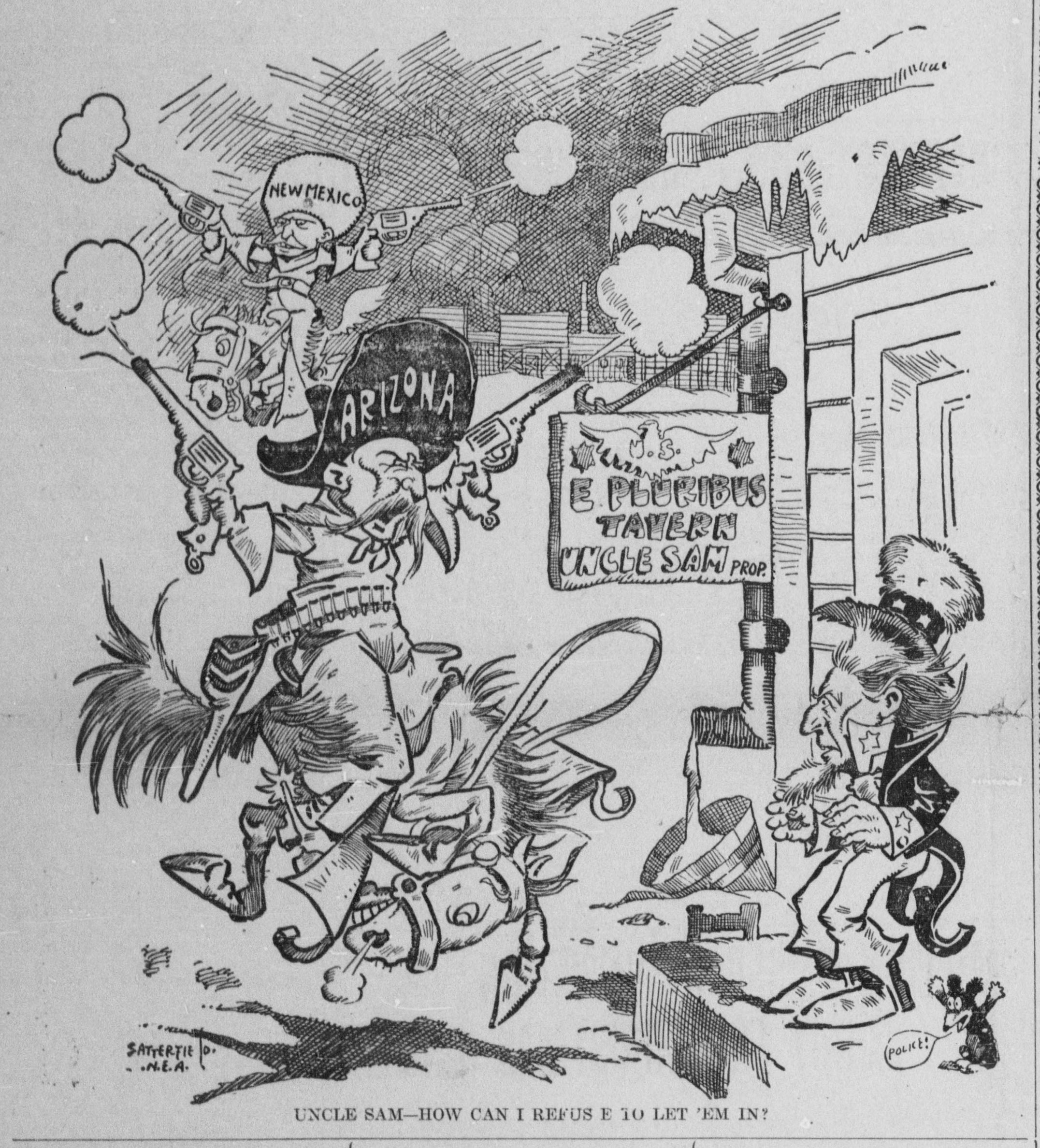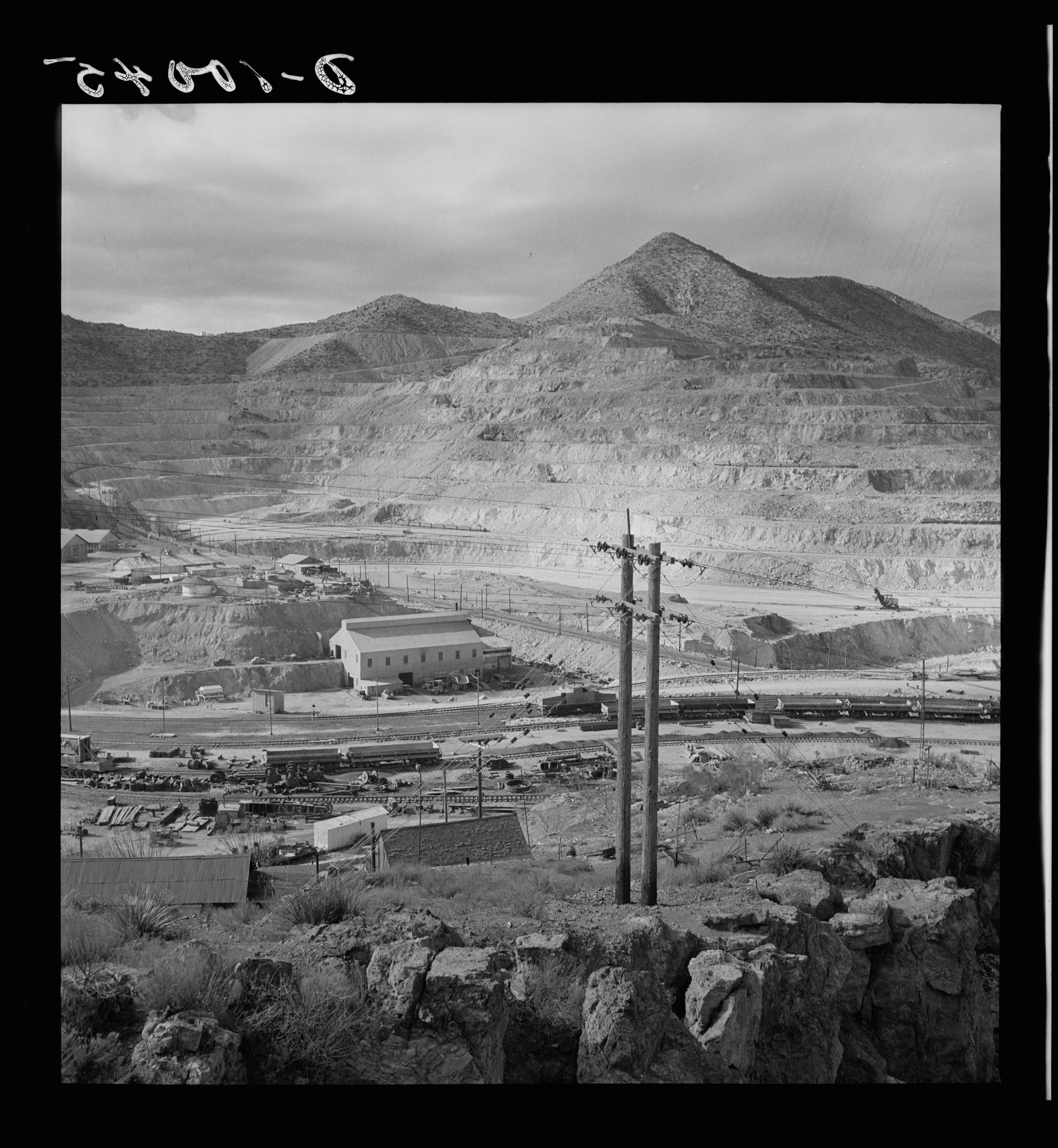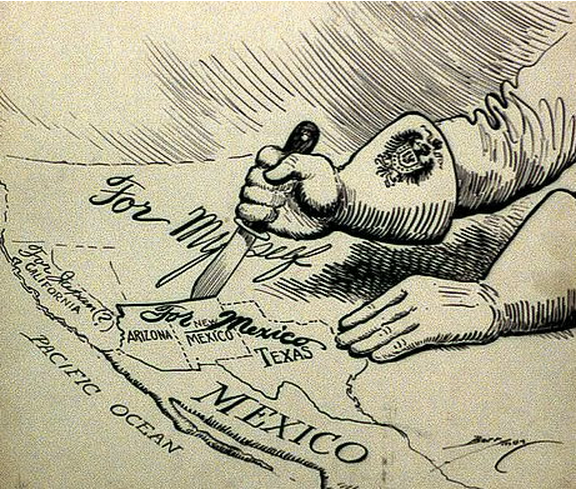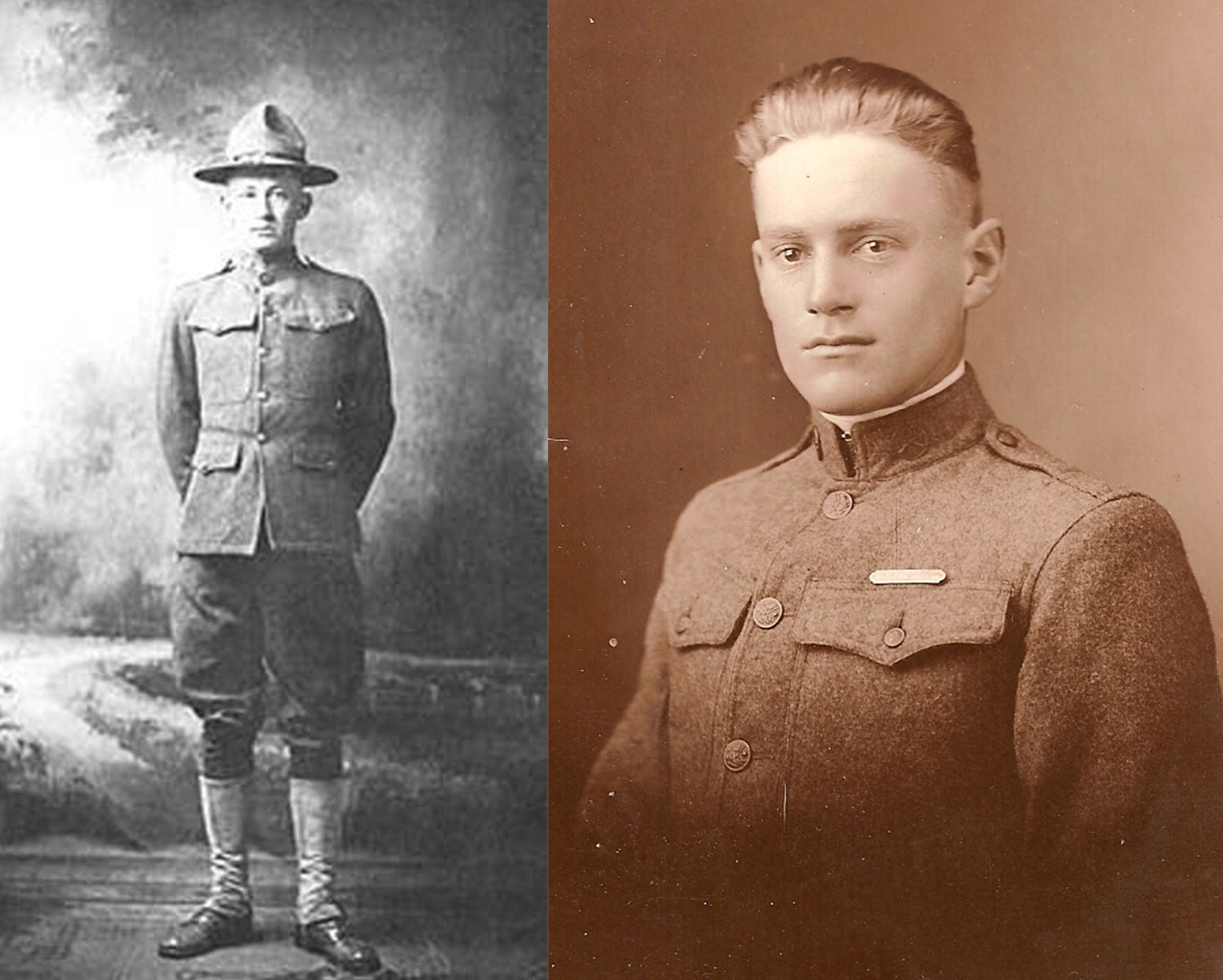Editor's note: This is the second in three-part series that came from the search through history for the first Sun Devil war heroes. Howard Draper and Albert Pitts were killed overseas during WWI. Today, we explore a young Arizona, a skeptical nation and the decision to go to war.
Arizona in 1917 was still rural — “in a weird way,” ASU historian Heidi Osselaer said.
“It’s a state that was transitioning to a modern society, as was the entire country,” she said. “We tend to mark that World War I-era as the time where America enters the modern world.”
At the time, people clustered in mining towns. About 330,000 people lived in Arizona in 1920, a 63 percent increase from the 1910 census.
“Mining towns, do you consider those rural?” Osselaer said. “They’re cities. Bisbee, Morenci, Globe, Clifton, those places were big towns when they were booming, and then they’d die. So in a sense, they were urban. You had ranching and farmers, but more people than you’d think were in the cities; then, as now, there’s not a lot of private land. Mostly state, federal, Indian land. So you are clustered in urban areas, but these urban areas were small towns. There was a time, I think, Bisbee was probably the biggest city in the state, and Phoenix took over pretty much around the turn of the century.”
Satterfield political cartoon about the imminent statehood of Arizona and New Mexico.
The state had something of an inferiority complex. The rest of the country wasn’t enamored of the Southwest in general. When New Mexico and Arizona were admitted to the Union in February 1912, Eastern newspapers ran cartoons welcoming the new states that depicted them as sleeping Indians and Mexicans or rootin’, tootin’ cowboys firing pistols. Arizona had an image as a violent, lawless desert hellhole. People here were acutely aware of that.
“There was an effort by reformers to clean up the state,” Osselaer said. “They got a prohibition law passed; they gave women the right to vote. ... They start passing anti-gambling laws, anti-prostitution laws and all these other things. So there is this image.
“This was a transition, when people are moving into cities from ranches and the country, and you have things like indoor plumbing, electricity, movie theaters, all these wonderful things. So you see it becoming a more urban and modern society. That said, Arizona was the poorest state in the Union at that time. People had to work hard to get by.”
War
America declared war against Germany in April 1917. The country was divided. It was America’s first foreign war against a serious, industrialized opponent, and the national mood was isolationist. Put it this way: Vietnam was more popular.
One-third of Americans were immigrants who had come over to avoid being conscripted into the Prussian or German armies, or they were immigrant-born. They had no interest in sending their sons overseas to die fighting for some royal family. As many Americans skipped the draft as served in World War I.
Heidi Osselaer is a faculty associate in ASU's Department of History. Photo courtesy of Heidi Osselaer
“Do most people want to go fight overseas?” asked Osselaer, the ASU historian. “No. These were Old World dynasties. These weren’t democracies. Are you going to go fight against the Kaiser and the Hapsburgs? You can imagine the average farmer or rancher who was working hard: ‘My son is going to go? Who is going to bring in the crops?’”
People wrote letters to draft boards, congressmen, anybody they could to get their sons out of conscription. Osselaer quoted from them:
“‘I can’t go to war. My folks live in Yarnell and they are 16 miles outside of town; both of them have tuberculosis. They do not have a car, they cannot get in. If I leave and I do not take care of them, they will starve to death out there.’ It was really serious stuff.
“The head of the Arizona Cattle Growers Association: writing letters to the draft boards, in Washington, D.C., the War Department: ‘You have to understand, sir, that cowboying, ranching, is a young man’s job. You’ve decimated my industry.’ All these men are being pulled off to go to the front line, cause cowboys are usually single, young, ruthless ... they go pretty quick in the draft process. He goes: ‘This is not something I can put an old man in. Their body won’t take it; I can’t get cattle rounded up for slaughter. My industry is falling apart.’
“Cotton growers: having trouble finding pickers. Everybody is scrambling to get everybody. So this is our first taste of it, and for a lot of families, they would just say, ‘I don’t want my boy to go.’ They would send him to a relative in another town, they’d send him out of state to hide out. That was very common. And, most complied, the vast majority, but they were not happy. And they were happy when the war ended quickly.”
Robert Spindler is the archivist of special collections at Hayden Library. Photo by Charlie Leight/ASU Now
Urban folks had a different take on the war, said ASU archivist Robert Spindler.
“They were politically connected; they read the newspaper … more educated, more global view of things, and would be more sympathetic to the patriotism and the call to arms,” Spindler said. “So, I think you’ll see very different perspectives, depending on who you talk to.”
When war was declared, Congress knew a draft would be needed. Similar to Pat Tillman, Howard Draper and Albert Pitts both signed up right away. It’s why they both saw action in Europe. If they had waited, it’s likely they would have been part of an occupying force in defeated Germany. As it was, they were overseas for the heart of the fighting.
More people died in car accidents back home than died on the Western Front, Osselaer said.
“Volunteers like (Draper and Pitts) were the exception, not the rule,” she said. “A lot of people avoided it entirely.”
To go or not to go?
Arizona mines ran 24/7 and made a ton of money during the war. With metal prices through the roof, miners worked longer hours than ever — but not for much more money.
“There was a lot of testiness,” Osselaer said. “I was surprised when I learned (Draper’s) parents were in mining camps, because those were very contentious. … There were a lot of miners on strike. They were chanting things like, ‘Down with the draft.’ They were of the mentality that this was the rich man’s fight. … I was surprised to see he was from that sort of background.”
Open-cut copper mining operations at the Phelps-Dodge Mining Company at Morenci supplied great quantities of the copper vital in the war effort. Photo courtesy of Library of Congress
The response to the mining strikes became a dark period in Arizona history. July 1917 saw what has become known as the Bisbee Deportation, the illegal kidnapping and deportation of about 1,300 striking mine workers, their supporters and citizen bystanders by 2,000 members of a deputized posse.
The action was orchestrated by Phelps Dodge, the major mining company in the area, which provided lists of workers and others who were to be arrested in Bisbee. The arrested were first held at a local baseball park before being loaded onto cattle cars and deported 200 miles to New Mexico. Phelps Dodge presented its action as reducing threats to U.S. war interests, and no one was ever convicted of wrongdoing.
Some Arizonans who enlisted saw it as an obligation of becoming a state five years earlier. Many of Theodore Roosevelt’s Rough Riders came from Arizona. That had an effect as well, Osselaer said.
“Arizona has a strong military tradition because of the Spanish-American War and Teddy Roosevelt and the Rough Riders,” she said. “Frank Luke was hailed as a hero, and John Greenway, and many men. A lot of people — the upper classes here — viewed the Spanish-American War as a way to prove that Arizonans were ready for citizenship. They had done that on the battlefield by volunteering with Teddy and all that.”
A lot of the early enlistees tended to be more educated and well-off, like Albert Pitts, or they came from military backgrounds. “That’s where you get those guys,” Osselaer said.
Zimmerman Telegram political cartoon: The infamous 1917 Germany-Mexico idea.
Proximity to the border also made Arizonans more likely to support the war.
The German foreign minister, Arthur Zimmermann, invited revolution-torn Mexico to join the war as Germany's ally against the U.S. In return, the Germans would send Mexico money and help it recover the territories of Texas, New Mexico and Arizona, which Mexico lost during the Mexican-American War 70 years earlier. British intelligence intercepted the Zimmermann Telegram and passed it on to Washington. President Woodrow Wilson released it to the public, and Arizona and much of the rest of the nation saw it as a casus belli.
“Even though I think that was a far-fetched scheme, people were afraid,” Osselaer said. “Pancho Villa had been on the border for years going back and forth. There were unstable governments and violence and revolution in that country. I think there was a sense that it was time to step up.”
First to go
Four months after Draper’s performance as Lincoln and a month after the U.S. had declared war on Germany, Capt. Oscar Temple of the First Arizona Infantry addressed morning assembly at school, the Arizona Republic reported. Temple discussed “the war, its phases, and the best opportunities the young man has who is just enlisting,” the paper said.
Draper was one of them. The day before, he was among a handful of students who had enlisted in the infantry.
“Recruiting officers were there, and I’m sure one of them got to him and encouraged him to go,” said Osselaer, the ASU history expert.
Albert Pitts (left) and Howard Draper. Photos courtesy Arizona State University
The university administration wrestled with how to deal with current events intruding upon academic life. A solution was arrived upon and an announcement made.
“President Matthews of the Normal states that the school is not encouraging the young men to join the forces and neither are they discouraging them,” the newspaper said. “In the belief of the faculty members it is a question that every man should decide for himself, but once determined to go, the men are receiving every possible aid from the instructors.”
The next day, 500 students and civilians turned out at the train station to watch Draper and his small group board a train to join Company C of the First Arizona Infantry on the border.
“It was a demonstration such as Tempe has not seen in years,” the Arizona Republic reported. “As the train rolled into the depot, the old school yells filled the air and then each man in turn was given a cheer individually.”
Searching for Sun Devil war heroes
Part 1: Pitts and Draper: Different, yet similar
Part 2: An unpopular choice to enlist
Part 3: Life — and death — at the front
Top photo: 125th Infantry, 32nd Division, passing through Masevaux, Alsace, France. Courtesy of Library of Congress
More Law, journalism and politics

Native Vote works to ensure the right to vote for Arizona's Native Americans
The Navajo Nation is in a remote area of northeastern Arizona, far away from the hustle of urban life. The 27,400-acre reservation is home to the Canyon de Chelly National Monument and…

New report documents Latinos’ critical roles in AI
According to a new report that traces the important role Latinos are playing in the growth of artificial intelligence technology across the country, Latinos are early adopters of AI.The 2024 Latino…
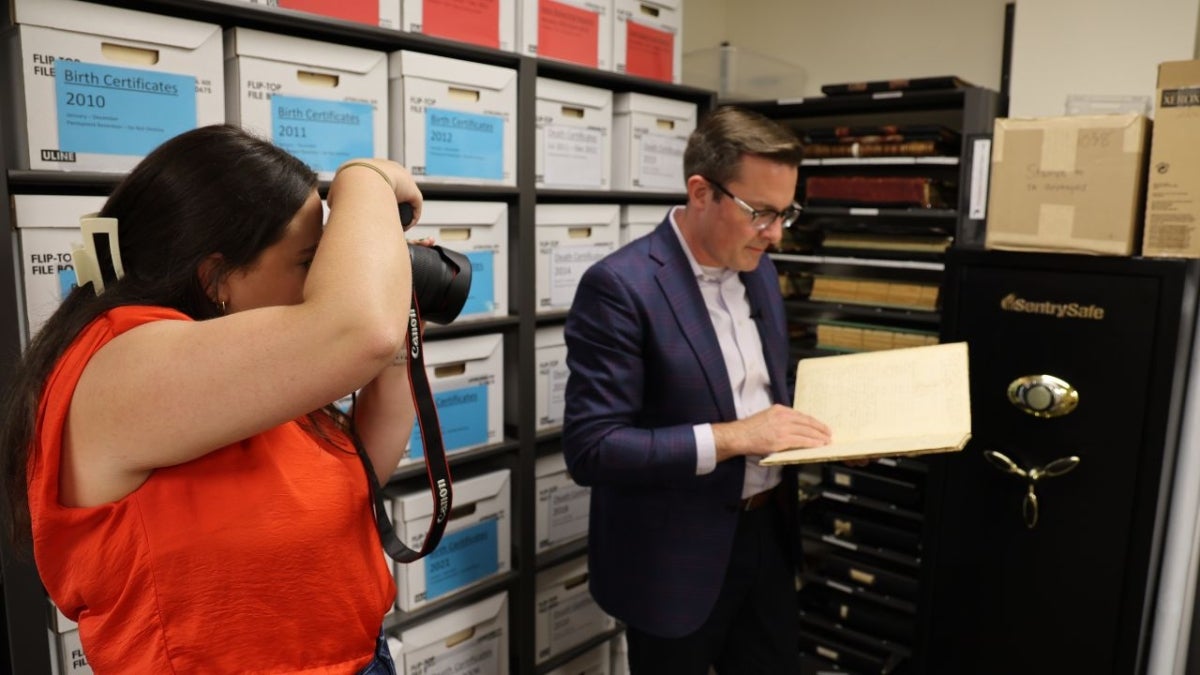
ASU's Carnegie-Knight News21 project examines the state of American democracy
In the latest project of Carnegie-Knight News21, a national reporting initiative and fellowship headquartered at Arizona State University’s Walter Cronkite School of Journalism and Mass Communication…

